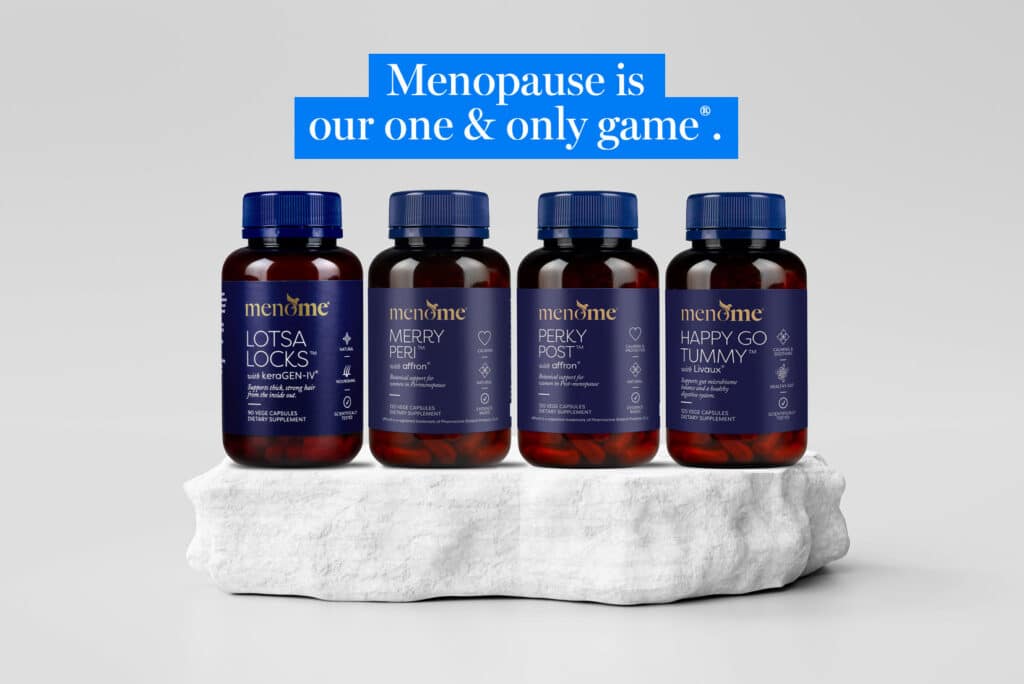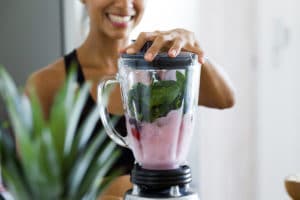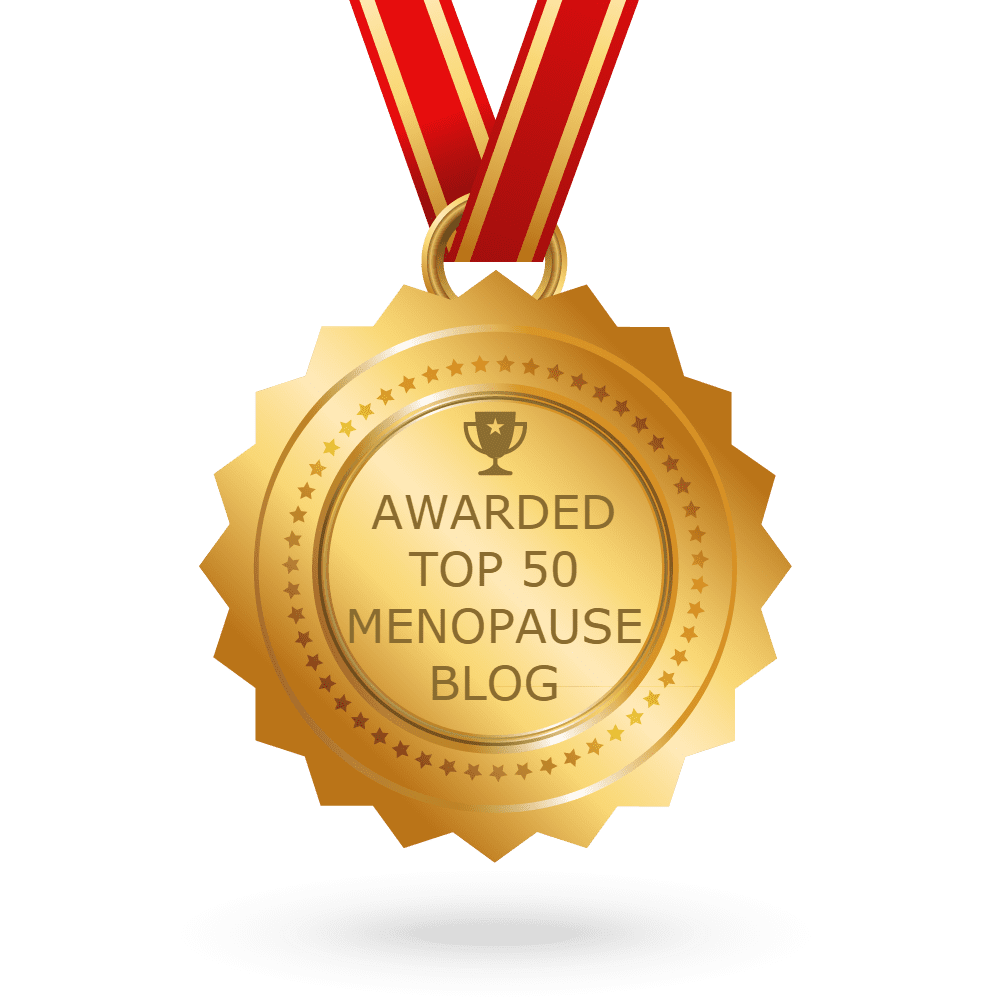Let’s talk about menopause and alcohol for a few minutes.
One of the things we hear often from women who want help with perimenopause / menopause symptoms is:
“I can’t live without my wine.”
We get it!
A glass or two of your favourite tipple after a tough day at work or when the kids have gone to bed is a way to decompress.
Menopause & alcohol intolerance
But, here’s the thing, when it comes to menopause and alcohol that glass of vino may not be your BFF.
At least not when you’re in what we term ‘triage’ – a time when you’re trying to bring your hormones into balance and kick symptoms to the curb.
Indeed, alcohol can sometimes magnify everything from hot flushes to mood swings to anxiety and sleep disorders for some women.
And therein lies the rub: for some women.
Because just like menopause, everyone’s alcohol tolerance is different.
Certainly many women we talk to say they can’t tolerate alcohol the way they once did. Furthermore, if they do imbibe they know they’ll suffer the consequences.
Men, women, menopause & alcohol
As a woman, your sensitivity to alcohol is often more pronounced than it is for men. This is because women are usually smaller and our bodies process alcohol differently.
For starters, females have less alcohol dehydrogenase which are enzymes that break down alcohol in the liver and stomach. Additionally, the alcohol dehydrogenase is far less active in women’s livers and we also have a higher bodily fat/water ratio. What’s more, as we grow older our bodies hold less water.
But the kicker is we have less of these enzymes as we grow older and hit menopause, therefore we can’t metabolise it as well.
What’s more, the water loss is clearly visible in your skin which can look less plump. And lack of hydration is one reason alcohol intake can make your skin look drier and you might feel not-so-good the following day.
As a result of these factors, your alcohol levels rise more quickly than they do for men and the lower water volume impedes the way you dilute it.
Perimenopause, menopause, post-menopause & alcohol

The truth is that when it comes to menopause and alcohol there’s conflicting science.
Your changing hormonal levels affect everything you drink and eat when it comes to your liver and digestive processes. Additionally, one of the liver’s jobs is to detoxify excess estrogen. Alcohol is a toxic substance so the liver must prioritise it but the detoxifying liver action of your youth isn’t as functional. Therefore, your liver may not process the alcohol as well.
Additionally, alcohol is a well-known dehydrator that we’ve found increases menopause symptoms. That said, this is purely anecdotal and based on observation rather than research.
Likewise, we’ve noticed that the inflammatory effects of alcohol can increase the joint pain that many of you struggle with. Moreover, it also robs us of some of much-needed nutrients such as vitamin B, magnesium and zinc. Alcohol is also linked to bladder sensitivity so if you suffer from UTIs you’ll want to avoid it.
Consequently, mixing menopause and alcohol can become quite damaging for women. However, not always. According to The International Menopause Society light to moderate drinking (in some instances) can be helpful but heavy drinking is risky.
And that’s why – sad as it may be if you love your tipple – perimenopause / menopause and alcohol don’t always mix well.
Menopause & alcohol has been linked to:
- Sleep disruption – alcohol raises estrogen and cortisol levels and disrupts the circadian rhythm
- Cancers of the mouth, oesophagus, liver and colon. Especially breast cancer when you drink more than two standard drinks per day
- Hot flushes and night sweats – the jury’s out on this with contradictory data but dilated blood vessels caused by drinking alcohol are believed to be a potential trigger
- Depression/anxiety – alcohol affects the central nervous system and initially, it can make you feel calmer. But as the body processes it, it may interfere with mood regulators like serotonin and norepinephrine and increase feelings of depression and anxiety
- Hypertension – light drinking has been associated with cardiovascular health however heavy drinking adversely affects it
- Bone health – light to moderate drinking may help bone density but heavy drinking may increase the risk of falls. Surprisingly, one study found that low-alcohol beer was bone protective for women
- Type 2 diabetes – moderate drinking increases insulin sensitivity leading to a lower risk of diabetes. However heavier drinking can increase the risk
Menopause & alcohol – how much should you be drinking?
This comes down to bioindividuality and how much we drink.
For example, light to moderate drinking (1-2 glasses) may have some benefits. However, in some cases, no amount of drinking or heavy drinking (more than two glasses) is safe in midlife.
So there’s good news and bad news.
Alcohol guidelines
It’s a smart move to keep track of how much you’re drinking as many glasses are far bigger than a standard drink.
One standard drink contains 10g of alcohol.
New Zealand’s Health Promotion Agency advises:
- Two standard drinks a day for women
- No more than 10 standard drinks a week
- At least two alcohol-free days every week
Click here for a Guide To Standard Drinks from alcohol.org.nz
Click here for Australian guidelines from the National Health and Medical Research Council

8 good drinking habits to consider
- Incorporate alcohol-free days (AFDs) into your week.
- Look at some of the many no-alcohol options available (always look at the sugar content).
- Go for organic which contains fewer additives that mess with your hormones.
- Red wine is higher in polyphenols and resveratrol than white wine.
- If you’re a spirit girl, avoid mixers that can be full of sugar. For example, tonic water is super high in the sweet stuff.
- Hydrate. It’s an old rule and good advice for any age to match every glass of wine with a glass of water.
- Never drink on an empty stomach. This is always important but when you become more alcohol sensitive it’s even more so.
- Nix the nightcap. While it may help send you off to sleep you could find your hard-working liver wakes you around 2am while it works to metabolise it
Summary
Just as every woman’s journey through menopause is different, the same is true of how you process alcohol.
If you’ve come through perimenopause and are into post-menopause the general evidence shows that perimenopause symptoms should decrease. However, if you’re still experiencing symptoms such as hot flushes or bladder issues and having your daily tipple the alcohol could be the culprit.
Research is showing that women are drinking more making them more vulnerable to side effects.
We’d suggest avoiding it for at least three weeks to give your liver a rest and diminish symptoms. Subsequently, after things even out you can enjoy the odd glass.
Much more research is needed but the advice for your best health and your best menopause appears to be to keep your daily quota to one drink.
Go non-alcoholic
There are some delicious and low sugar alcohol-free alternatives available now such as Ecology and Seedlip from non-alcoholic specialists Freasy and Australia’s Grapeful.
The new brand on the Kiwi block is Terps&Co which uses terpenes from plants and flowers to create similar tastes to whiskey, rum, gin and vodka.
Margarita Mocktail

- 3 tbsp Terps & Co. tequila-style
- 1 cup sparkling water
- 1 tbsp lime or lemon juice
- Optional – a dash of grated orange zest or natural orange extract.
- Crushed/shaved ice
- Take a beautiful glass and rub the rim with lime or lemon and dip it in a saucer of salt to create a salty trim.
- Add all the ingredients to a cocktail shaker or blender and shake or whizz.
- Enjoy the deliciousness!
You can find more recipes on the Ecology website here.










